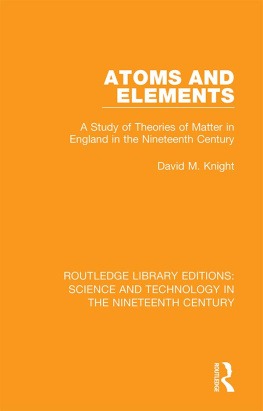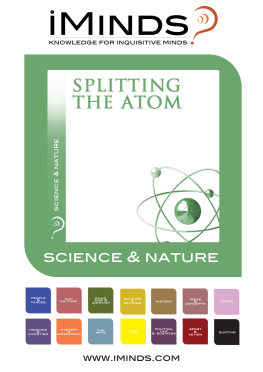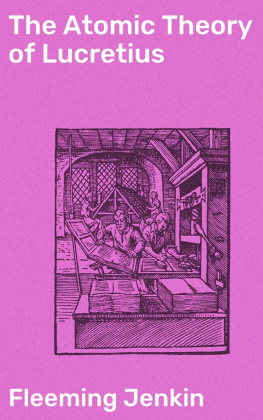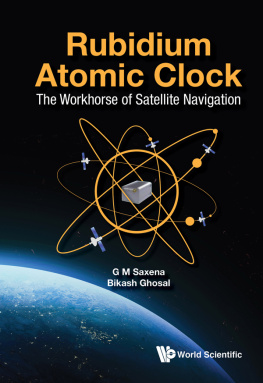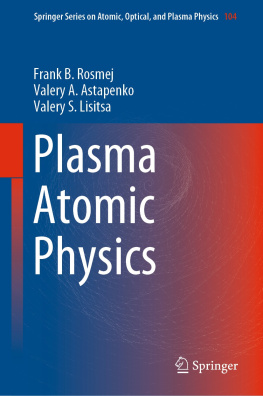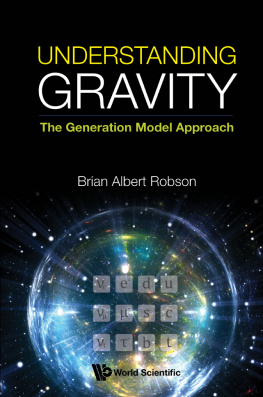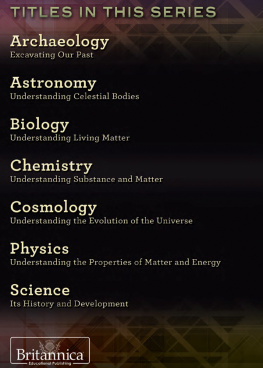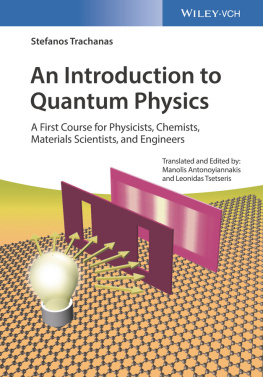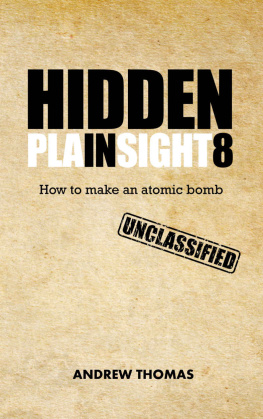ROUTLEDGE LIBRARY EDITIONS:
SCIENCE AND TECHNOLOGY IN THE NINETEENTH CENTURY
Volume 4
ATOMS AND ELEMENTS
ATOMS AND ELEMENTS
A Study of Theories of Matter in England in the Nineteenth Century
DAVID M. KNIGHT
First published in 1967 by Hutchinson
This edition first published in 2019
by Routledge
2 Park Square, Milton Park, Abingdon, Oxon OX14 4RN
and by Routledge
52 Vanderbilt Avenue, New York, NY 10017
Routledge is an imprint of the Taylor & Francis Group, an informa business
1967 David Knight
All rights reserved. No part of this book may be reprinted or reproduced or utilised in any form or by any electronic, mechanical, or other means, now known or hereafter invented, including photocopying and recording, or in any information storage or retrieval system, without permission in writing from the publishers.
Trademark notice: Product or corporate names may be trademarks or registered trademarks, and are used only for identification and explanation without intent to infringe.
British Library Cataloguing in Publication Data
A catalogue record for this book is available from the British Library
ISBN: 978-1-138-39006-5 (Set)
ISBN: 978-0-429-02175-6 (Set) (ebk)
ISBN: 978-1-138-39378-3 (Volume 4) (hbk)
ISBN: 978-0-429-40148-0 (Volume 4) (ebk)
Publishers Note
The publisher has gone to great lengths to ensure the quality of this reprint but points out that some imperfections in the original copies may be apparent.
Disclaimer
The publisher has made every effort to trace copyright holders and would welcome correspondence from those they have been unable to trace.
ATOMS
AND
ELEMENTS
A Study of Theories of Matter in England in the Nineteenth Century
DAVID M. KNIGHT
HUTCHINSON & CO (Publishers) LTD
178202 Great Portland Street, London W1
London Melbourne Sydney
Auckland Bombay Toronto
Johannesburg New York
First published 1967
David Knight 1967
This book has been set in Bembo, printed in Great Britain on Antique Wove paper by Anchor Press, and bound by Wm. Brendon, both of Tiptree, Essex
Acknowledgements
It is a pleasure to acknowledge the help given by a number of scholars and librarians. And, in particular, I should like to thank Dr A. C. Crombie and Mr Rom Harr of the University of Oxford; Dr W. H. Brock of the University of Leicester; and Mr Arnold Thackray of Cambridge University, for help given at various stages in the history of this work. I should also like to thank Professor Stephen Toulmin for his helpful remarks on seeing the draft of this book.

In the history of science, as in other branches of history, it is necessary from time to time to indulge in revision, and to see whether the general picture we have inherited from the past is a satisfactory account of what actually happened, or is essentially myth. This is perhaps particularly so in the history of science, which has often been written in a whiggish manner as an account of the progress of science. Authors whose views seem an anticipation of modern theories are exalted, although usually the anticipation is far from complete, and the old and new theories were designed to explain different sets of phenomena. So it has been with atomism. Since, it is argued, the world is composed of atoms, those who in Antiquity or in modern times wrote in support of atomism were, in some strong sense, right; while those who opposed them were reactionary and wrong, or at least to be apologised for. This is absurdly unhistorical. If we are to assess scientists of the past, we must judge their views not by this kind of criterion but by their consistency and their power to explain the phenomena then known and felt to be puzzling. We shall then find that some atomic theories (for to some extent every atomic theory which explains new phenomena is a new and different theory) were sound and well based; while others were nave and speculative.
In an epoch of atomic weapons we tend to take it for granted that matter is made up, in some sense, of atoms; and to forget that the status of these entities is not quite the same as that of tables and chairs. Chemistry books and short histories of science, hurrying through the development of the subject, usually imply that we owe this understanding of the nature of matter to John Dalton who, early in the nineteenth century, revived the atomic theory of Lucretius and made it the central principle of chemistry. One would therefore expect a priori that the century between the publication of Daltons theory and the discovery of atomic disintegration would have been the great classical period of atomism.
In fact this is not at all what is revealed by an inspection of the literature. Atomism was resurrected in the seventeenth century; and the nineteenth stands out as a century in which scientists were deeply divided over atomic explanations. There was no one classical, received atomic theory, but rather a number of theories overlapping in their explanatory ranges; and Daltons was a precursor of that of Kekul rather than of twentieth-century atomism.
The historian of atomic theories must therefore seek to keep clear a number of issues which were muddied by the protagonists themselves. There is first the question as to whether an atomic theory is wanted at all. Opponents of all atomic theories fell into two groups: those, relatively few, who believed matter to be ultimately a continuum, and those who held that the whole question was a metaphysical and not a scientific one. Science, on this view, should aim simply at equations connecting observables. Distinguished men opposed atomism on this ground until well into the first decade of the twentieth century. And until atomic theories began, towards the end of the nineteenth century, to have a cash value in terms of empirical usefulness in the sciences, and to generate experimentally testable consequences, it was not unreasonable to describe them as metaphysical.

